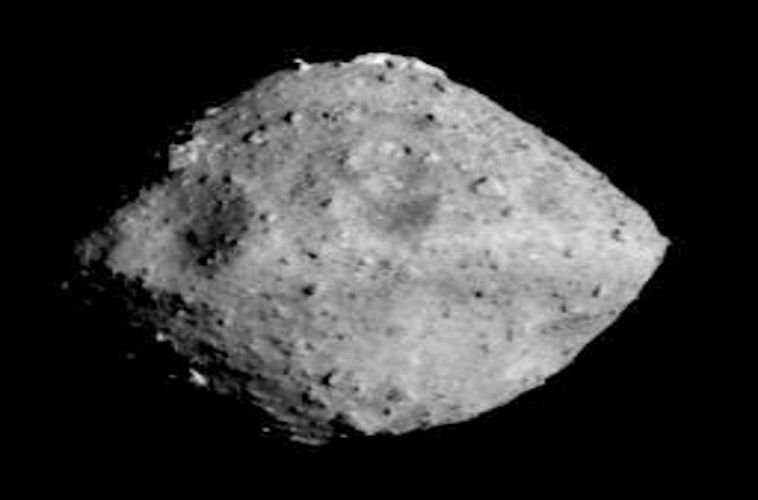Japanese Reach Asteroid Ryugu

The Japanese Aerospace Exploration Agency has a spacecraft in position next to a C class asteroid. Read on to learn more about what they hope to discover.
Asteroids are distant objects too small to study in detail with Earth-based telescopes. Astronomers nevertheless have learned a surprising amount about these little worlds using spacecraft and space telescopes. Evidence from meteorites shows that the asteroids are the last remains of the rocky planetesimals that build the Terrestrial planets 4.6 billion years ago.
Asteroids
- Most asteroids come in an irregular shape and appear battered from impact cratering. Many asteroids look like rubble piles of broken elements.
- Some asteroids have small moons in orbit around them. Consequently, astronomers believe that asteroids have suffered collisions.
- A few asteroids show signs of geological activity that probably happened on their surfaces when those asteroids were young.
- Asteroid classifications include albedos, colors, and spectra. These reveal clues to their compositions. This also allows them to be compared to meteorites in labs on Earth.
- C-type, S-type, and M-type asteroids make up the main classes of asteroids.
C-Type Asteroids
Astronomers have evidence that asteroids are the remains unable to form a planet because of Jupiter’s gravitational influence. Over the 4.6 billion-year history of the solar system, most of the objects originally in the asteroid belt have collided, fragmented, and been covered with craters.
As a consequence, they left behind carry clues to their origins. For example, C-type asteroids have albedos less than 0.06. Therefore, it would appear very dark to our eyes.
Albedos-the proportion of the incident light or radiation that is reflected by a surface, typically that of a planet or moon.
C-type asteroids appear to reside in the outer asteroid belt. After traveling for three-and-a-half years, the Japanese spacecraft Hayabusa-2 this week makes its final approach to the asteroid Ryugu. The probe will release landers on the space rock’s surface later this year, bring back a precious sample to terrestrial labs in 2020, and it is already giving planetary scientists their closest-ever view of a mysterious kind of asteroid.

Credit: JAXA
Ryugu Asteroid
Ryugu is about 1 km wide and makes a complete rotation every 7.5 hours. If it spun faster, they would have a problem landing their probe. Furthermore, they need to look at the temperatures of the asteroid before they will launch the probe.
“All of these data will be crucial for deciding where to release MASCOT, the shoebox-sized lander that will probe the asteroid, and the three other small probes carried by the mothership, which will photograph the asteroid as they roll across it” said Yuichi Tsuda from the JAXA. If everything goes well, they will release the probe in October.
“We don’t know much about C-type asteroids,” says McFadden, a planetary scientist at NASA’s Goddard Space Flight Center in Greenbelt, Maryland. Astronomers believe that this asteroid will have a composition similar to that of the early Solar System. In particular, Hayabusa-2 will determine whether the darkness of Ryugu’s surface is due to it being rich in carbon. On the other hand, it may have small, metallic particles such as magnetite creating the dark appearance.
In late 2019, Hayabusa will head back to Earth, a journey expected to last a year. We hope that Hayabusa will have the opportunity to collect great samples for us to learn more about C-type asteroids.
